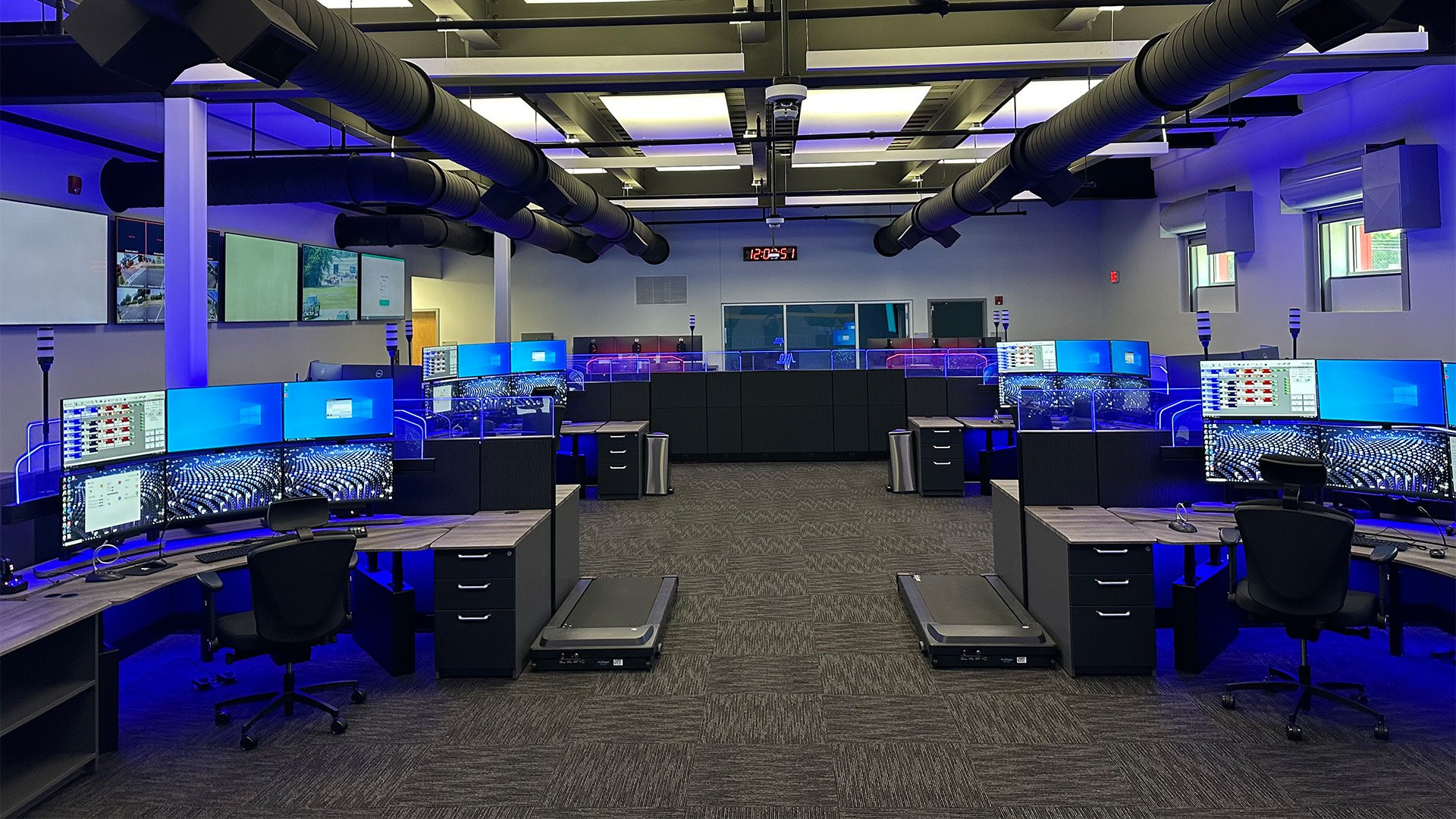COMMAND CENTER HIGHLIGHTS: PERCEPTO DRONE
Percepto, a global leader in autonomous drone technology, partnered with Xybix to create a mission-ready operations center that could keep pace with their rapid growth. What began as a plan for a smaller space quickly shifted when the team realized they needed more operators and a larger, more collaborative environment. Ownership of the project transitioned to manager, Vanessa, who worked closely with Xybix to reimagine the layout, maximize space, and ensure every detail supported operator efficiency. Through onsite re-measurement, design revisions, and global input from Percepto’s headquarters in Israel, Xybix delivered a fully customized design.
The final space, nicknamed “The Vault,” features seven single-surface workstations plus a supervisor station, optimized for oversight and collaboration. By fine-tuning equipment needs, aligning with budget goals, and incorporating branded design elements, the center now balances functionality with team pride.
The result is a space built for today’s demands with the flexibility to support Percepto’s future growth. Check out the full Case Study here.


